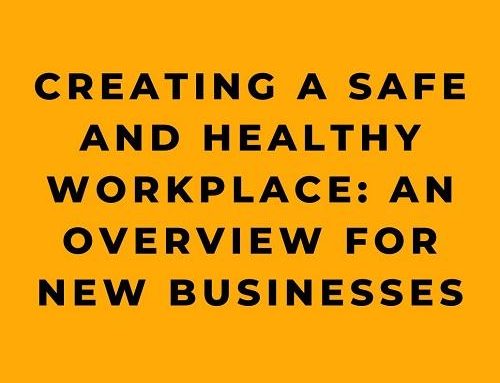If you’re a business owner, it’s important to know what to expect when OSHA (the Occupational Safety and Health Administration) comes knocking. Here’s a quick guide to help you prepare for an inspection and ensure that your workplace meets all relevant safety standards.
First of all, it’s worth noting that OSHA inspections can be either planned or unplanned. Planned inspections are usually scheduled in advance and are typically triggered by a specific complaint or referral. This can be from an employee, a union representative or even an anonymous tip. The complaint or referral should be specific and give OSHA enough information to initiate an inspection. Unplanned inspections, on the other hand, are usually prompted by an accident or other serious incident that takes place on your property. These types of inspections are often called “programmed inspections” and are focused on industries or hazards that have a high incidence of injuries or illnesses.
Regardless of whether an inspection is planned or unplanned, you should expect OSHA inspectors to take a thorough look at your workplace. They’ll likely start by reviewing your OSHA 300 logs, which track workplace injuries and illnesses, and then move on to inspecting the actual worksite. The OSHA 300 logs provide the inspector with a summary of all injuries and illnesses that have occurred in your workplace over the past year. By reviewing the logs, the inspector can get a sense of the types of injuries and illnesses that are occurring in your workplace and target the inspection accordingly. Once the inspector is on site, they will typically walk through the entire facility and look for any potential safety hazards. They will also review any safety plans and procedures you have in place and ensure they are being followed correctly.
During the inspection, OSHA inspectors will be looking for a wide range of safety hazards, including things like fire hazards, hazardous chemicals, and fall hazards. They’ll also be looking to see if you’re in compliance with all relevant OSHA regulations, including those related to personal protective equipment, hazardous materials, and emergency action plans. OSHA has standards in place for a variety of hazards, such as hazardous chemicals, fall protection, and emergency action plans, that the inspector will be looking to see if you are in compliance with. They will also be looking to see that you have the appropriate personal protective equipment available for your employees, and that it is being used correctly.
One of the most important things you can do to prepare for an OSHA inspection is to make sure that all of your safety documentation is in order. This includes things like your OSHA 300 logs, safety plans, and training records. It’s also a good idea to conduct a thorough safety audit of your workplace before an inspector arrives, so you can identify and correct any hazards that might be present. By having all of your safety documentation in order and conducting a thorough safety audit, you can ensure that you are in compliance with all relevant OSHA regulations and that your workplace is as safe as possible. Additionally, by identifying and correcting any hazards before the inspector arrives, you can avoid any potential violations and fines.
Another key part of preparing for an OSHA inspection is to train your employees on what to expect during the inspection process. This will help them feel more comfortable and less stressed when an inspector arrives, and it will also help them be more prepared to answer any questions that the inspector might have. By providing your employees with the knowledge of what to expect during the inspection, they will be able to better understand the process and know how to answer any questions that the inspector may have. This can help to reduce any potential stress or anxiety that they may have, and it will also help them to feel more prepared and confident when the inspector arrives.
When OSHA inspector arrives, it’s important to be respectful and cooperative. This includes giving them access to all areas of your workplace and answering any questions they have to the best of your ability. Remember that the inspector is there to help you, not to punish you, and they’re ultimately trying to ensure the safety of your employees. By being respectful and cooperative, you can help to create a positive and productive environment during the inspection. This can help to make the process go more smoothly and can also help to ensure that the inspector doesn’t find any additional violations that they might have otherwise missed. Additionally, by providing the inspector with access to all areas of your workplace and answering any questions they have, you can help to demonstrate your commitment to safety and compliance, which can work in your favor if any violations are found.
Finally, if OSHA finds any violations during an inspection, they will notify you and provide you with a specific time frame to correct them. Be sure to address any violations promptly and effectively, and always keep accurate records of your corrective actions. By understanding and following OSHA regulations, you can help ensure a safer workplace for your employees and avoid any penalties. By addressing any violations promptly and effectively, and keeping accurate records of your corrective actions, you can demonstrate your commitment to safety and compliance to OSHA. This can help to reduce the severity of any penalties that may be issued, and it can also help to ensure that your workplace remains in compliance with all relevant OSHA regulations.
In conclusion, preparing for an OSHA inspection is an important step in ensuring the safety of your employees and maintaining compliance with all relevant regulations. By understanding what to expect during the inspection process, keeping your safety documentation in order, training your employees, and being respectful and cooperative during the inspection, you can help to ensure a smooth and productive experience. Additionally, by addressing any violations promptly and effectively, you can help to minimize the risk of penalties and ensure that your workplace remains in compliance with all relevant OSHA regulations










